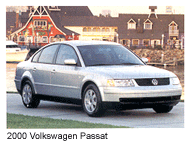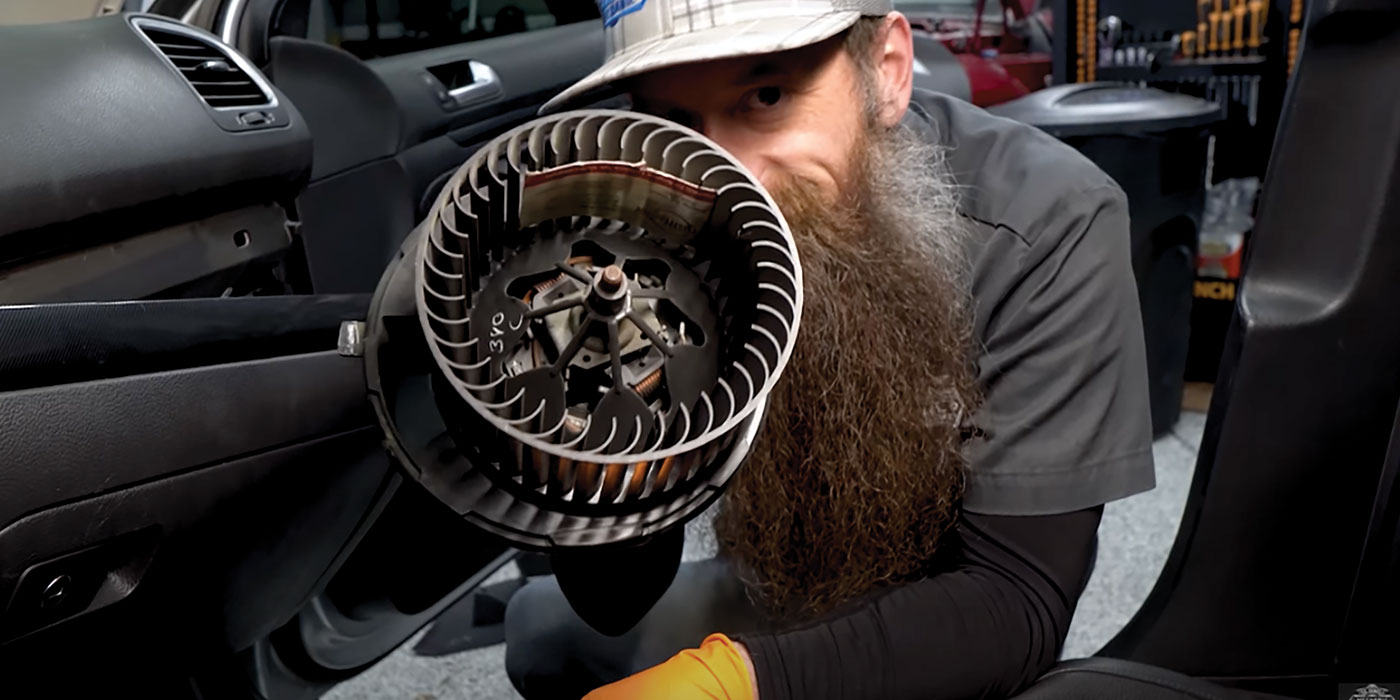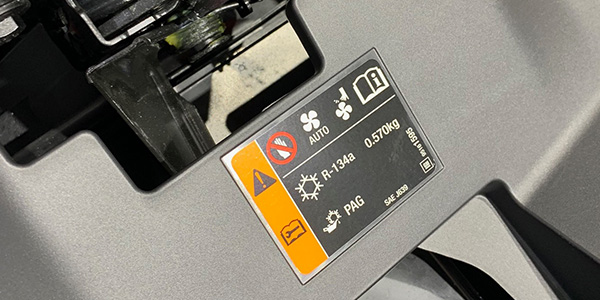More often than not, deciphering diagnostic trouble codes is like playing a high-tech version of the old circus sideshow “shell” game. In the trouble code shell game, we are led to believe that the pea (diagnostic solution) is hidden under one of the shells (DTCs) stored in the diagnostic memory. Unfortunately for the diagnostic technician, none of the shells (DTCs) on the diagnostic table may have a pea hidden underneath.
Are diagnostic technicians the victims of deception? Not really, because automotive engineers are constantly trying to out-smart their own creations by trying to devise an “on-board diagnostic” or OBD system that will detect any type of system failure.
Unfortunately, their results are often less than predictable since the relationship between the DTCs we see and the actual component failure at hand are, at best, tenuous.
Old and Tired
Most recently, I had a “tired” 1991 Dodge Dakota 5.2L V8 come into the shop with 125,000 miles on the odometer and two trouble codes, a DTC 41 (alternator field open or shorted) and a DTC 37 (TCC circuit open/shorted), stored in the diagnostic memory. Neither DTC caused the MIL to illuminate nor did either have anything to do with the customer’s main concern, which was a random cranking, no-start complaint.
 Just once during preliminary testing, I noticed on my lab scope that when I turned the key on, the TP voltage momentarily shot up to nearly 5 volts. Of course, I couldn’t duplicate such a random occurrence and therefore couldn’t determine the exact value of the voltage, but this single occurrence was enough to lead me to suspect that the PCM might be “seeing” a random clear-flood signal from the TP sensor and was responding by shutting off the fuel injectors during cranking.
Just once during preliminary testing, I noticed on my lab scope that when I turned the key on, the TP voltage momentarily shot up to nearly 5 volts. Of course, I couldn’t duplicate such a random occurrence and therefore couldn’t determine the exact value of the voltage, but this single occurrence was enough to lead me to suspect that the PCM might be “seeing” a random clear-flood signal from the TP sensor and was responding by shutting off the fuel injectors during cranking.
Why didn’t the defective TP sensor cause a trouble code to be stored in the PCM’s diagnostic memory? To better understand, let’s look at how an on-board diagnostic (OBD) system detects sensor and actuator failures and stores the appropriate trouble codes by measuring circuit voltage.
Circuit Voltage
In this instance, a 5-volt “reference” is supplied to the TP sensor by the PCM. The internal resistance of the TP sensor reduces the reference voltage from 5 volts to 0.65 volts and returns that value to the PCM to indicate closed throttle. During wide open throttle (WOT), the return voltage increases to a maximum of 4.5 volts which, as we’ll see below, is limited to that value for diagnostic purposes.
Generally speaking, most PCMs “learn” the closed-throttle voltage value of the TP sensor and the PCM may therefore expect to “see” 0.65 volts when the ignition switch is turned on. Next, the PCM expects to “see” the voltage smoothly increase to 4.5 volts as the throttle reaches the WOT position.
The voltage is limited to 4.5 volts in the return circuit because the PCM needs a way to determine if the resistor in the TP sensor is shorted. If the return reaches 5 volts, the PCM may decide that the TP has an internal short or that the TP ground circuit is open. If the PCM detects zero voltage in the signal return circuit, it may decide that the TP circuit is open at the 5-volt reference, inside the TP itself, or at the signal return connector.
Why wasn’t a DTC stored that indicated a shorted TP sensor? First, a DTC wouldn’t be stored because the PCM actually “thinks” it is “seeing” a WOT clear-flood signal during the cranking mode. Second, the TP voltage must exceed 4.5 volts in order to store a trouble code and that evidently had not been the situation in our case study. Last, some OBD systems must see the engine reaching operating temperature before they will store intermittent DTCs.
As for DTC 41, the brushes in the alternator were obviously wearing out, causing an intermittent open circuit in the alternator field. The DTC 37, indicating a problem with the torque converter clutch circuit, was confirmed by a test drive. During the test drive, the ignition module built into the PCM failed, which caused still another cranking, no-start issue. Of course, this brings into question the faulty TP sensor as the real cause of the original cranking, no-start complaint. Such is the confusing world of the trouble code shell game!
Detecting Sensor Calibration Errors
As a rule, I don’t diagnose European vehicles, but I do make exceptions when a vehicle is far away from an authorized dealership. In this case I took in a 2000 model year Land Rover with an MIL-on, hard-starting and stalling complaint. Using generic OBD II, I retrieved DTCs P0171 and P0174 from the Land Rover’s diagnostic memory. The pertinent freeze-frame data available through the scan tool was: +22% long-term fuel trim, +21% short-term fuel trim, 11 mph vehicle speed, 210° F coolant temperature and 1,944 rpm engine speed.
 Of course, the P0171 and P0174 indicated that the right and left bank oxygen sensor voltage outputs were low, which is caused by a lean air/fuel (A/F) mixture ratio. The high fuel-trim numbers led to the same conclusion. Experienced diagnostic techs know that the P0171 and 174 DTCs are often caused by miscalibrated or dirty air flow sensors. So, the obvious question is, “Why are we seeing an oxygen sensor DTC instead of a DTC from the air flow sensor?
Of course, the P0171 and P0174 indicated that the right and left bank oxygen sensor voltage outputs were low, which is caused by a lean air/fuel (A/F) mixture ratio. The high fuel-trim numbers led to the same conclusion. Experienced diagnostic techs know that the P0171 and 174 DTCs are often caused by miscalibrated or dirty air flow sensors. So, the obvious question is, “Why are we seeing an oxygen sensor DTC instead of a DTC from the air flow sensor?
The answer is that most OBD systems are designed to “rationalize” component failures by comparing signals from three or more sensors. At the most basic level, a PCM may rationalize signals from sensors like the oxygen, TP, air flow, coolant temperature and crankshaft position (CKP) sensors to detect a miscalibrated air flow sensor.
Rationalization
To better illustrate the rationalization process, let’s say that the PCM “sees” 4.5 volts from the TP, 3,200 rpm engine speed, 30 grams per second (g/s) air flow, 201° F coolant temperature and between zero and 0.4 volts from the oxygen sensors.
Since 4.5 TP voltage indicates WOT, an air flow of 30 g/s at 3,200 rpm would be considered very low for a mid-size V8 engine like that in the Land Rover. Depending upon the volumetric efficiency of the engine, normal would be two or three times that amount. By comparing rpm and air flow, the PCM might determine that the air flow sensor is defective and store an applicable DTC. But, if this were the case, why didn’t the PCM’s OBD system store a trouble code indicating a badly miscalibrated air flow sensor?
To understand, let’s go back to the freeze-frame data, which indicated that the DTCs were stored at a very low vehicle speed of 11 mph and an engine speed of 1,944 rpm. At 1,944 rpm and 11 mph, the engine doesn’t flow enough air for the OBD system to detect a large percentage difference between actual and calibrated air flow. But, because the air flow sensor is seriously underestimating the actual amount of air flowing into the engine, the A/F mixture becomes extremely lean and causes the O2 sensors to drop out of their normal 0.2 to 0.8-volt switching range. So, instead of storing an air flow sensor DTC, the OBD system stores two oxygen sensor DTCs indicating that the oxygen sensors aren’t switching through their correct range.
The solution to the Land Rover’s driveability complaint was simply tightening the clamp that connected the air flow sensor to the engine’s air intake tube. At low speeds, the air intake tube would slightly separate under engine torque and cause a low-speed A/F calibration issue. At high speeds, the small percentage of leakage didn’t cause an A/F calibration issue nor did it enable the OBD system to store an air flow sensor DTC.
The Trouble Code Landscape
Here again I find myself diagnosing an unfamiliar vehicle, which in this case study was a 2000 model year Volkswagen Passat with an MIL-on, rough idle and low power complaint. The owner had come in a month before with the MIL on and a rough idle complaint. Since the owner was leaving on a long trip that very day and I didn’t have time to diagnose the vehicle, I recommended that he contact a VW dealer along the way.
 Now, however, here he was in my driveway a month later with the same complaint. As his story went, he stopped by three VW dealerships, each of whom provided a different diagnosis or repair. One dealership said he had an oxygen sensor problem, another claimed bad catalytic converters and the third recommended and installed a new set of spark plug wires with no result.
Now, however, here he was in my driveway a month later with the same complaint. As his story went, he stopped by three VW dealerships, each of whom provided a different diagnosis or repair. One dealership said he had an oxygen sensor problem, another claimed bad catalytic converters and the third recommended and installed a new set of spark plug wires with no result.
In defense of the dealerships, let me say that transient customers rarely receive the attention of their best diagnostic technicians and justifiably so, because the customer usually declines the repair because of time constraints and goes on his way. However, accessing the VW’s on-board diagnostics with a generic scan tool yielded DTCs P0421 and P0431, which are DTCs indicating catalyst efficiency problems with the right and left catalytic converters. But these catalyst DTCs don’t explain a rough idle condition.
By using Snap-on Tool’s new VW cartridge, I obtained a more complete picture of the failure scenario. Working through the menus, I discovered a VW-specific DTC #16684. Under that were listed generic DTCs P0300, 304, 305 and 306. The P0300 indicates a general misfire from more than one cylinder. After consulting a firing order diagram, I discovered that the P0304, 305 and 306 misfires were all located on the driver’s side cylinder bank. Okay, I now have two sets of DTCs, neither of which seem to address the primary failure. Clearly, the third VW tech who sold the spark plug wires saw the misfire DTCs, but didn’t make the connection that they were originating from the same cylinder bank. The second tech saw the converter trouble codes, but didn’t make the connection with the misfire codes. The first tech had evidently observed some oxygen sensor codes, but erased them from the on-board diagnostic memory.
But we’re talking about a vehicle with only 56,000 miles on the odometer. It’s highly unlikely that this same vehicle would simultaneously suffer an oxygen sensor, catalytic converter and ignition failure within a few hours or days.
The conclusion I arrived at was quick and simple: one of the camshafts on the left-hand cylinder bank may not be timed correctly with the crankshaft. Months before, I had a 1997 Dodge Intrepid with the same set of DTCs and symptoms that had developed after the timing belt had been replaced.
Keep in mind that, due to differences in engine design and failure characteristics, this isn’t a one-size-fits-all explanation. But let’s consider that incorrect cam timing drastically upsets the air/fuel ratio at various engine speeds. When this happens, the oxygen sensors have difficulty trimming the air/fuel ratio. In turn, the PCM has difficulty calculating catalyst efficiency from wildly erratic oxygen sensor inputs. Thus, we see the misfire DTCs, catalyst DTCs and oxygen sensor DTCs caused by a single malfunction, which is an out-of-time camshaft. As for the actual repair, the catalytic converters are covered by the 8/80 emissions warranty. At 56,000 miles, I might also assume that an out-of-time camshaft also might be covered under some type of extended warranty. Given the potential expense to repair the problem, I referred the owner back to a local VW agency.
In Summary
As these three case studies have illustrated, none of the diagnostic trouble codes stored in the vehicle’s on-board diagnostic memory had a direct connection with the primary failure. My first example illustrated that a vehicle can suffer from a faulty throttle position sensor and a faulty primary ignition circuit in the PCM without storing a diagnostic trouble code. If I had spent hours diagnosing the stored DTCs, I would have been looking under the wrong shell.
The second example illustrated how trouble codes can reflect problems with an unrelated system which, in this case, was the oxygen sensors telling me that I had a problem with loose air flow sensor ducting. Again, the trouble code “shells” didn’t contain a pea underneath.
The last example illustrates how a technician can get lost in the forest by looking at individual trouble codes instead of addressing the significance of their unique combination. As a consequence, a suspected camshaft timing issue remained undetected while inexperienced technicians went chasing oxygen sensor, catalytic converter and ignition system failure issues.
In all three instances, it would have been easy to be fooled by the technical oversights built into the vehicle’s on-board diagnostic system. In reality, experience and good systems knowledge indicated that the primary failure remained outside the domain of the stored trouble codes. Such are the issues involved with playing the trouble code shell game.







